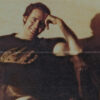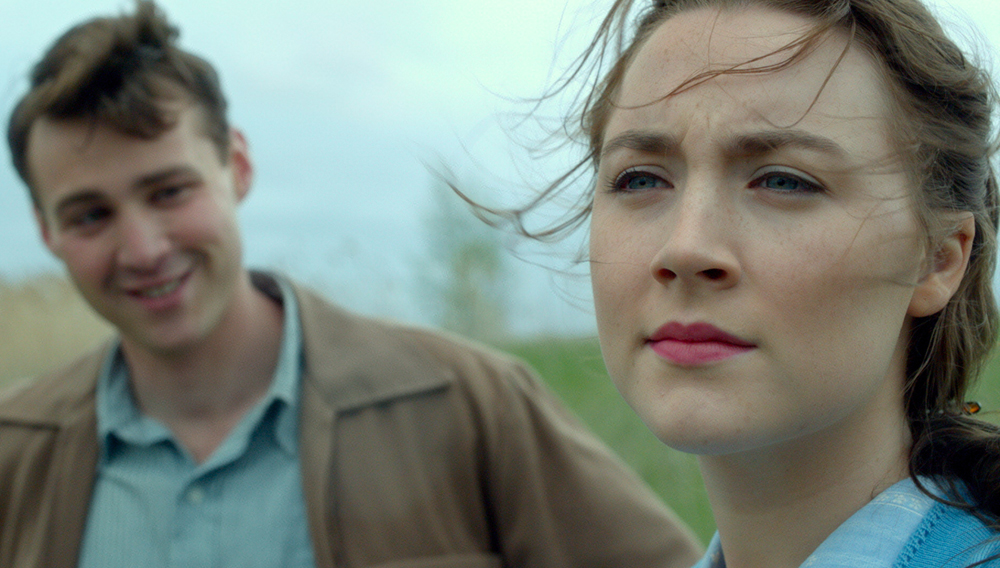It isn’t surprising that “Brooklyn,” one of the most painterly films of this past year arrives from Quebec-born cinematographer Yves Bélanger, who in the past few years has created some of the most intriguing character portraits in recent years in his collaborations with Jean-Marc Vallée. In films such as “Dallas Buyers Club,” “Wild” and the upcoming “Demolition,” actors are often filmed as if they really are more than the sum of their parts, with Bélanger often using a distinctly modern sense of framing to capture swatches of a character’s essence in fleeting moments so that by the time all the pieces come together it’s like they’re walking into focus for the first time.
Yet this sort of cinematic impressionism isn’t what makes the director of photography’s latest feel as though he’s been using brush strokes rather than a camera. Instead, it is how “Brooklyn” unfolds almost as if it were a giant mural, exploding with bold and brilliant colors to mark the journey of its heroine Eilis (Saoirse Ronan) as she travels from Ireland to New York and back again during the 1950s to find a proper place to start a life of her own. Although Bélanger ably portrays the differences between the two worlds Ellis finds herself caught between, there’s a fluidity to the film that seems particularly attuned to her emotional wavelengths, changes in her mood that appear to have the power to change the tint of the sky.
Armed with an extraordinary turn from Ronan, however, you’re not usually looking out into the distance, something that the DP takes full advantage of with close-ups that are both direct and powerful. Recently, Bélanger found a free few minutes in a schedule that has become quite busy in the wake of his much-lauded work on “Dallas Buyers Club,” recently filming the Naomi Watts thriller “Shut In,” to speak about how he achieved the right look for “Brooklyn.”

It’s the beauty of magic of life. I was finishing “Wild” and the producer Bruna [Papandrea] said, “I have a friend, a producer in England who has a nice project, with the same writer, Nick Hornby,” and she wanted me to talk to her. After that, I spoke to the director and I really liked him and the movie was going to be shot in my country [Canada in Montreal, substituting for 1950s New York], and a town in Ireland — and I always wanted to go to Ireland. The director liked me too and he chose me, so that was it.
That director John Crowley had said that the two of you together arrived fairly quickly at the idea you could tell the story relying heavily on Saoirse Ronan’s face. How did that shape your approach to the film?
What we agreed upon right away was that everything would be around Saoirse and her character. Maybe it wouldn’t always be her point of view, but there would be a lot of scenes where we’re close on her and we see what she sees. So it was really very simple. It was just faces. The human face is actually very well lit and important, so we can read the emotion, but I arranged a general lighting unit for each set. Saoirse was so good, I just had to be there and record this magnificent actress, so it was not a technical shoot. We had a couple of green screens, but it was very easy following an actress during a great performance.
Is it true Gordon Willis was an influence in terms of lighting?
Yeah, I’ve always loved Gordon, but in this case it was a great script and we had only had 35 days, not a lot [of time] to do this kind of movie. We also had three countries to move [around between], but I wanted to have some time so that they would not wait too much for me. So basically what I did was to have my lighting always coming from the window or a practical lamp that you see in the shot. If I needed more — this is where Gordon Willis comes in — I would do some soft top lighting [like] the scenes that he created in “The Godfather.” I had a lot of dinner scenes at night and I thought it’s going to be great if I use this soft top light [because] we’re going to be able to shoot two cameras at the same time at any angle. My light was big enough, but sometimes top light can make people look older — that’s a little bit why Gordon Willis did it in “Godfather,” so Brando would look older — but because I had a cast that was more glamorous, and we were able to shoot handheld with two cameras at the same time, we were able to develop the scenes in a small amount of time, and at the same time it would look great, so I was happy with the result.

No, it’s just good actors, a good rehearsal and good direction. On “Brooklyn,” I think we never go more than six or seven takes. We could shoot more because we were shooting digital but there was no waste. It’s really just good planning and working with great people. Some directors shoot a lot more.
When you shoot Eilis in a conversation, you also always see the other person, even if its just their shoulder in the frame. Was that something you were conscious of?
I don’t know. It’s something that we always do — me and John together — and I just thought it was neat. I like to feel the person listening. Sometimes we move a little bit and rack focus to the [other] person, but I really don’t think about it. I hate when you have shot of actors and they are in the middle of the frame and they look almost like you’re taking their picture in a photo-mat booth. The more I think about it, there’s a little bit of Gordon Willis [there] too.

Yeah, I did that sometimes in this movie. To light though, I have a technical scenario that’s very subtle. I don’t think people notice it, but maybe you feel it. I wanted to have a change of look during the movie so when I start the movie in Ireland, life is rough and I shot with a lens that isn’t as modern and without diffusion, so it’s a rougher, realistic image. They were all high speed lenses I used on “Dallas Buyers Club,” and after that, when she goes to America and she’s living the American dream, I’m using these new lenses — Arriflex Master Primes. They are very sharp but very smooth at the same time, which is weird to say, but they make everything look like velvet and they have good information. I used a little bit of diffusion to make it look a little bit nostalgic and when she goes back to Ireland because she has to change a lot, I used some Leica lenses, which are sharper and because she sees what her country really is and her past life. She’s in love and she’s a woman now, so I used some diffusion, but it’s subliminal. It’s important to have these little scenarios in my head. It keeps me alive.
“Brooklyn” is now in theaters.




